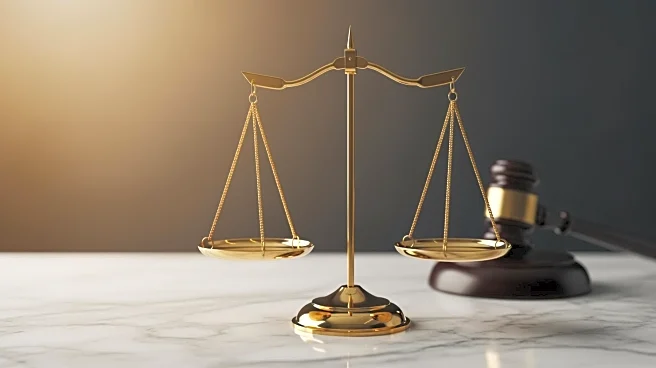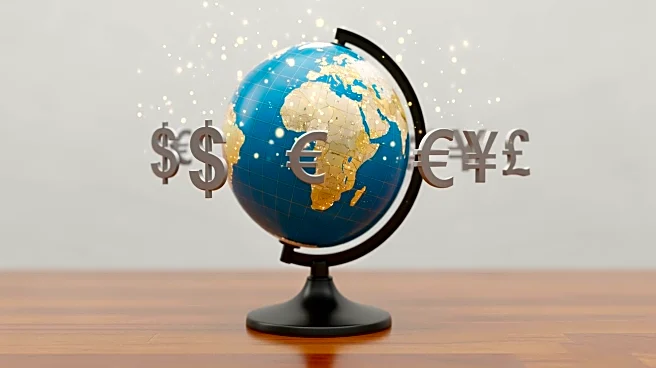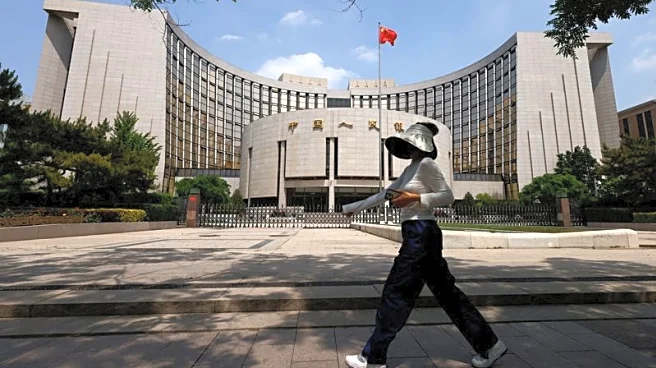What's Happening?
Gold prices surged over 2% to reach a two-week high, driven by weak economic data from the United States that has reinforced expectations of an interest rate cut by the Federal Reserve. The U.S. economy
experienced job losses in October, particularly in the government and retail sectors, and consumer sentiment has declined in early November due to concerns about economic repercussions. According to the CME Group's FedWatch tool, there is now a 67% probability of a rate cut in December, with the likelihood increasing to approximately 80% by January. The anticipation of lower interest rates has boosted demand for gold, a non-yielding asset that typically performs well in such environments.
Why It's Important?
The potential rate cut by the Federal Reserve is significant as it could influence various sectors of the U.S. economy. Lower interest rates generally encourage borrowing and investment, potentially stimulating economic growth. However, they also reflect underlying economic challenges, such as job losses and declining consumer confidence. The shift in monetary policy could impact financial markets, with investors adjusting their strategies based on anticipated changes in interest rates. Additionally, the focus on the U.S. fiscal outlook may intensify, as government actions to address economic issues become more critical.
What's Next?
The U.S. Senate's recent move to end a prolonged government shutdown could restore data flow and further influence expectations for a December rate cut. As the market continues to monitor economic indicators, stakeholders such as businesses and policymakers may need to adapt to evolving fiscal conditions. The Federal Reserve's decisions in the coming months will be closely watched, as they could have far-reaching implications for economic stability and growth.
Beyond the Headlines
The broader implications of a rate cut extend beyond immediate economic adjustments. It may signal a shift in the Federal Reserve's approach to managing economic challenges, potentially affecting long-term fiscal policies. The focus on the deteriorating U.S. fiscal outlook highlights the need for sustainable economic strategies that address underlying issues such as job creation and consumer confidence.












